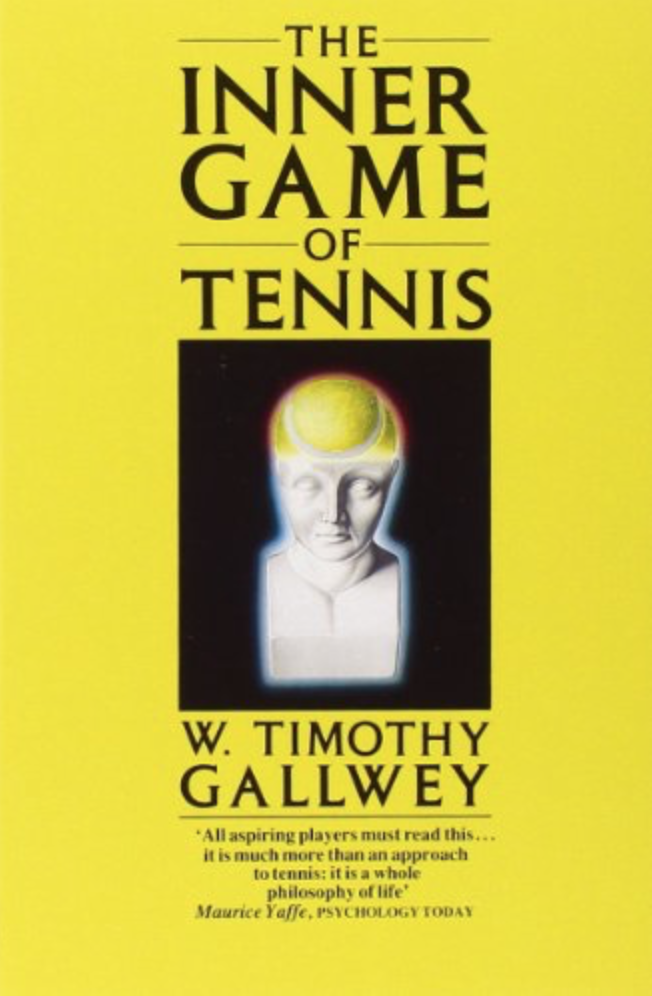
Tennis and writing? Really? While W. Timothy Gallwey’s 1975 book The Inner Game of Tennis is about the game with the little yellow ball, the approach he developed, and the invitation it offers, has been the foundation of many coach training programmes around the world. The basic point is this: when you play tennis there are two games going on. There is the ‘outer game’ – scoring points, beating your opponent. And there is the ‘inner game’ – the one you are playing against yourself, inside your head.
The inner game Gallwey suggests has two players. One player is the egoic self (Self 1, he calls it), who is very fond of giving instructions, questioning, doubting, fueling fears. The other (Self 2) is the instinctive part that already knows what to do, that has been trained for this moment, that is just waiting for Self 1 to get out of the way so they can get on with things.
To experiment with these two selves, try lying down on the floor and getting up again. Easy; you know how to do it instinctually. Now try it again and, this time, let Self 1 instruct Self 2 on how to get up from the floor, which body part to put where when, every detail, and don’t move anything until you’ve had the instruction. Almost impossible!
And so too when we write. The challenge is how to get out of your own way. The goal is to allow the part of you that knows how and what to write to get on with it, in the flow, without the unhelpful doubting part getting in the way (note: healthy doubt has a completely different, enabling feel than the crippling feel of self-doubt). This is core to the WriteClub method – to keep writing when it’s time to write, to establish the habits that get you out of your way. To find the place of relaxed concentration, as Gallwey describes here:
The player of the inner game comes to value the art of relaxed concentration above all other skills; he [she/they] discovers a true basis for self-confidence; and he learns that the secret to winning any game lies in not trying too hard.
Another way to think about this is in terms of an equation developed from The Inner Game by coach Jon Whitmore: Performance = Potential – Interferences. Performance equals potential minus interferences.
What we notice over and over again with academic writing is that a lot of energy is focused on ‘Performance’ with a big ‘P’: writing to a high standard, targeting big journals, meeting evaluations criteria, etc. When this happens, the internal interferences are increased (the doubt, the pressure, all that Self 1 chatter).
What if you focused your energy on potential instead? Following this logic, might performance take care of itself?
This equation may also say something about the feedback we give people as peers or supervisors – does it help them find the place of relaxed concentration or does it trip them up? Which Self are we supporting, Self 1 or Self 2? Indeed, when we give feedback, is it in service of us (to show how clever we are, that we haven’t missed something) or in service of the writer finding their best writing self?
When it comes to being at our best, producing our best work, and supporting others to do the same, the biggest piece of the challenge may be how we manage our own inner game. This is why we consider your writing in the context of the rest of your life: how you talk to yourself, what your defaults are, how you habitually make things difficult for yourself, how you can make them easier. It’s all connected, all part of the game.
NEXT: A Container
